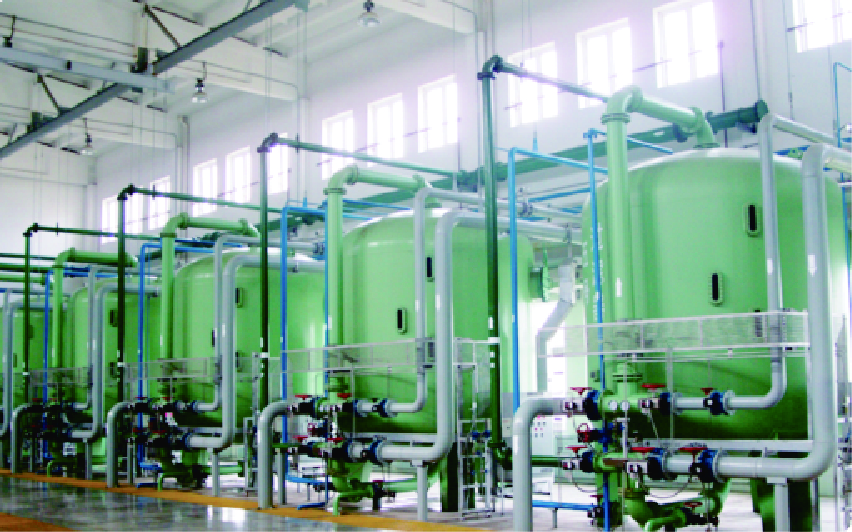
News
Aug . 16, 2024 09:21 Back to list
Exploring the Applications and Benefits of Sodium Salt Formulations of Poly L-Aspartic Acid
The Role and Benefits of Poly L-Aspartic Acid Sodium Salt in Modern Applications
Poly L-aspartic acid sodium salt (PLAS) is an innovative biopolymer that has garnered significant attention in various fields due to its remarkable properties and applications. As a derivative of aspartic acid, a naturally occurring amino acid, PLAS is characterized by its biodegradable nature, biocompatibility, and ability to form stable complexes with various substances. This article explores the significance of PLAS in contemporary industries, its benefits, and the future prospects of its applications.
Composition and Structure
Poly L-aspartic acid sodium salt is produced through the polymerization of L-aspartic acid, which is then neutralized with sodium hydroxide to form its salt form. This unique structure endows PLAS with several advantageous properties, including water solubility, flexibility, and anionic behavior, which allows it to interact favorably in diverse environments. The ability of PLAS to form hydrogels makes it particularly interesting for applications in biomedicine and agriculture.
Applications in Medicine
One of the most significant applications of PLAS is in the biomedical field. Its biocompatibility makes it an ideal candidate for drug delivery systems. By encapsulating pharmaceutical compounds within PLAS matrices, it is possible to enhance the stability and bioavailability of these drugs while also controlling their release rates. This is particularly beneficial in treatments requiring sustained drug action, such as in cancer therapies.
Additionally, PLAS is being studied for its potential use in tissue engineering. Its ability to form hydrogels can assist in creating scaffolds that support cell growth and differentiation. In regenerative medicine, PLAS-based scaffolds can facilitate the reconstruction of damaged tissues, making them a promising tool for repairing injuries and treating degenerative diseases.
Agricultural Innovations
poly l-aspartic acid sodium salt quotes

In agriculture, PLAS has been recognized for its functionality as a biodegradable polymer. Its role in controlled-release fertilizers is noteworthy, as it helps in the gradual release of nutrients, thereby reducing environmental pollution and improving fertilizer efficiency. The use of PLAS-based fertilizers can lead to better crop yields and lower input costs, contributing to sustainable farming practices.
Moreover, PLAS can also be utilized in developing biodegradable films and coatings that protect crops from pests while being environmentally friendly. The application of such materials supports the movement towards sustainable agriculture by reducing reliance on synthetic chemicals.
Advantages of Poly L-Aspartic Acid Sodium Salt
The benefits of using PLAS extend far beyond its applications. First and foremost, its biodegradable nature ensures that it doesn't contribute to the growing concerns of plastic pollution. Unlike conventional plastics, PLAS decomposes naturally, making it an eco-friendly alternative.
Moreover, the versatility of PLAS allows it to be customized for specific applications by modifying its molecular weight and substituent groups. This adaptability has spurred research into developing new formulations that capitalize on its unique properties to meet industry needs.
Future Prospects
Looking forward, the potential of poly L-aspartic acid sodium salt is vast. Continued research and development could unlock new applications in fields such as cosmetics, where PLAS can serve as a thickening agent and moisture-retaining polymer. Furthermore, as global awareness of environmental issues increases, the demand for biodegradable materials like PLAS is likely to grow, pushing industries to innovate further.
In conclusion, poly L-aspartic acid sodium salt is a remarkable biopolymer that offers numerous advantages across various fields, from medicine to agriculture. Its environmentally friendly characteristics, coupled with its versatility, position it as a key player in the ongoing shift towards sustainable materials and practices. As research continues to unveil its full potential, PLAS is set to become an integral component in the development of new technologies and solutions for a sustainable future.
-
Polyaspartic Acid Salts in Agricultural Fertilizers: A Sustainable Solution
NewsJul.21,2025
-
OEM Chelating Agent Preservative Supplier & Manufacturer High-Quality Customized Solutions
NewsJul.08,2025
-
OEM Potassium Chelating Agent Manufacturer - Custom Potassium Oxalate & Citrate Solutions
NewsJul.08,2025
-
OEM Pentasodium DTPA Chelating Agent Supplier & Manufacturer High Purity & Cost-Effective Solutions
NewsJul.08,2025
-
High-Efficiency Chelated Trace Elements Fertilizer Bulk Supplier & Manufacturer Quotes
NewsJul.07,2025
-
High Quality K Formation for a Chelating Agent – Reliable Manufacturer & Supplier
NewsJul.07,2025
